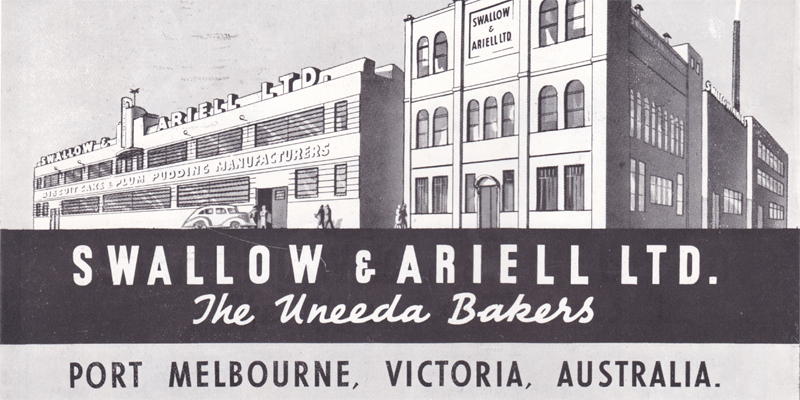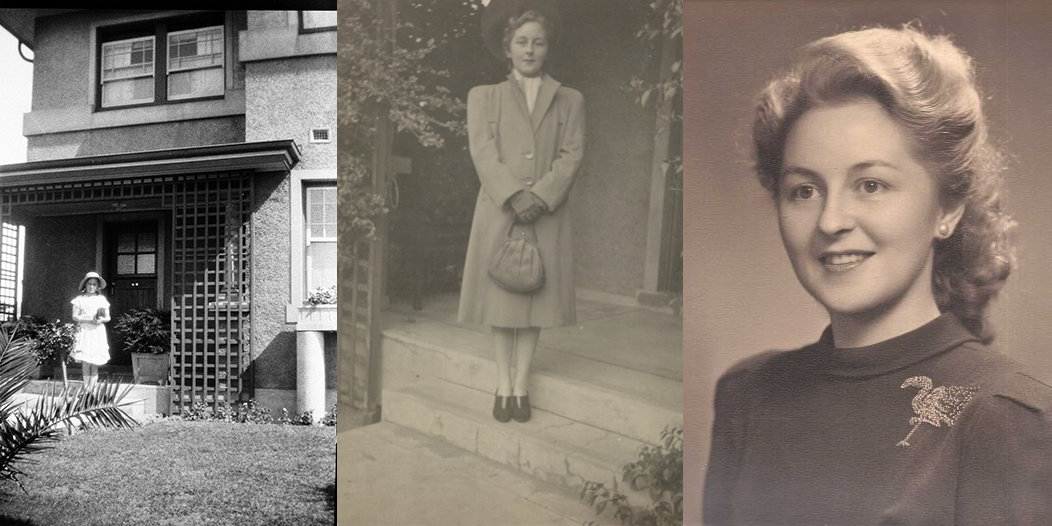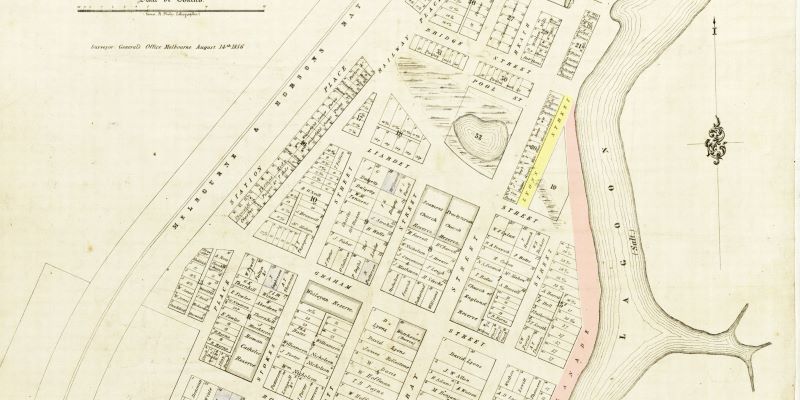Watery names: A cluster of Floodgate, Pool and Spring
It is shaping up to be our wettest June in many years. It prompted a look at the place names that reveal Port Melbourne’s watery foundation. A particularly flood prone spot was, and remains, the area around Ingles and Crockford St. In December 1863 “… a flood of unexampled severity occurred, which overwhelmed the low-lying land along the river course … The diverted current of water pouring across St Kilda Road is said to have been 11 feet deep. Flowing across Albert Road through the park, the water cut a passage to the sea. Emerald Hill was isolated in a waste of water, communication being maintained by boat. At the appropriately named Floodgate Hotel, near Sandridge, a channel 16 feet deep was cut out, over which a temporary bridge had to be built to carry traffic.”
 |
| Floodgate Hotel |
The PMH&PS calendar (2008) features a great picture of the cable tram making its way along a flooded Crockford St in 1919, with the Globe Hotel (now the site of a childcare centre) in view. The Society also has in its collection a fascinating and very detailed report on Stormwater Drainage of Port Melbourne by Town Clerk Heath dated 1904. The report provides detailed rainfall records, describes the catchment, analyses the performance of the pumping station in Esplanade West, and the direction of stormwater flows. One observation picked out of the report is that “when the Lagoon was open it acted as a storage reservoir for storm water, and served to quickly relieve the streets of water, which falling now, would cause a flood. It is partly on this account that flooding is more frequent now than in old times. Then only heavy storms, in combination with extraordinary tides, will produce the same effect.”
He makes a series of recommendations which include improved street cleaning!
That general area is covered by a Special Building Overlay in the Port Phillip planning scheme which identifies land ‘liable to inundation by overland flows from the urban drainage system’.
Pool St and Spring St also reveal their watery origins.
Street names are the theme of the CLUSTER exhibition at the City Gallery in Swanston St, on until the end of July. It includes the poet streets of Elwood, but not the ship cluster of Beacon Cove. Professor Graeme Davision has written an entertaining and interesting essay in the finely designed catalogue – its no surprise to learn that the curator is a graphic designer with a particular interest in typography.
This is just the briefest introduction to flood stories from Port Melbourne – it would be great if you could add anything you know.
Charles Daly A History of South Melbourne
Graham and Margaret Bride’s The Borough and its People Port Melbourne 1839 to 1939 discuss the 1863 flood in some detail
The Argus for 18 December 1863 which can be read online at Trove
Port Melbourne Historical and Preservation Society calendar June 2008, available from the Shop.
A V Heath Report on the Storm-Water Drainage of Port Melbourne April 6, 1904 (PMH&PS collection)



